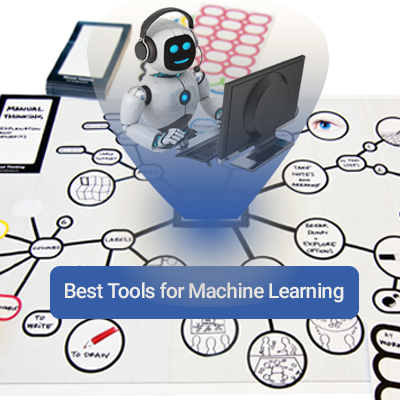Machine learning has become a mainstream matter to many tech enthusiasts and mobile app developers today, thanks to its role in powering many of the recent advancements in artificial intelligence. Let us explain what is machine learning, its benefits, and best tools and languages you require to develop machine learning technology.
What is Machine Learning?
Machine learning is a ‘field of study that gives computers the ability to learn without being explicitly programmed’, as defined by US computing pioneer Arthur Samuel in 1959. Machine learning is a subsection of artificial intelligence, which focuses on building computer programs that can assist themselves to be mature and change when posed to new data.
In machine learning, computers are trained to identify patterns or latest trends by providing them huge amounts of data. Deep learning or neural networks is another subsection within machine learning which powers up machine learning technology.
The most prevalent example of machine learning today is speech recognition technology which powers up self-driving cars, mobile apps, and web searches. Predictive ability of identifying the issues in vehicle’s machines (before they break), particularly in trains, cars and ships makes machine learning much more adoptable in both commercial use and day-to-day life.
Benefits of Machine Learning for Businesses
- Machine learning removes the barrier of spending a big amount of capital in AI
- Machine learning helps online businesses judge whether users pose a risk of fraud
- Businesses can use machine learning technology to scan photographs, i.e. face recognition
- Machine learning can be used to predict transportation traffic patterns, eruption of disease, lessening stocks and commodities or failures in hardware or increase in web traffic.
Best Tools for Machine Learning

Choosing the machine learning tools depend on the issues you’re trying to cope up with, and the data you are managing. However, open-source tools are hot favourite here. NLTK is one of the best tools used for ML, for natural language processing methods, whereas Scikit-learn offers you a wide range of machine learning and data analytics tools. NuPIC is used for streaming analytics, whereas mlpack is a favourite of C++ developers. If you’re going to leverage machine learning for deep learning, any among Theano, Neon, Google TensorFlow and deeplearning4j can be the best fit. Data manipulation, basic statistical analysis and data visualisation are a bunch of additional skills that you need to have.
The implementation of machine learning pipelines is very important in the ML building, so you need a familiarity with Apache Spark, a distributed computing network. Today many giant tech companies have introduced their own open-source machine learning toolkits, amidst of them Google TensorFlow, Amazon Machine Learning, IBM Watson and Facebook’s ‘FBLearner Flow’ are top performers.
How to Start Building Machine Learning?
Matt Jones, the head of analytics at Tessella says “The best way to get started is talk to experts or other competent people, and join a community of others wanting to learn”. If you already have a data science team in your organization, go and discuss the idea with them. If not, you can reach Topcoder and Kaggle, two popular online communities of machine learning experts, where you can be a part of running competitions and get a better insight on machine learning, as advised by Jones.
Andrew Ng’s machine learning course on Coursera is one of the best online courses you can go with. If you want to learn it through text book, you can choose among Pattern Recognition and Machine Learning by Chris Bishop, Learning From Dataeeeeeeeeeeeeeeeeeeeeeeeeeeeeeeeeeeeeeeeeeeeeeeeeeeeeeeeeeeeeeeeeeeeeeeeeeeeeeeeeeeeeeeeeeeeeeeeeeeeee by Abu-Mostafa, and Artificial Intelligence: A Modern Approach by Peter Norvig. Understanding the algorithms from the ground you’ll be using is key to have a clear understanding of machine learning.
Best Programming Languages for Machine Learning
Undoubtedly we can say Python is the best programming language used for building machine learning platforms. It has a big, helpful community. Today most machine learning and data analytics toolkits are in Python and it is comfy and familiar for most developers, as it is highly readable and easy to learn. And today most libraries are Python-based, including theano and Google’s TensorFlow which are used in bleeding edge ‘deep learning’ systems. Another prevalent language is R, which holds complete, complex and in-depth machine learning capabilities.
How to Setup a Framework for Machine Learning?
Before setting up the framework, have a clear understanding of the problem that you are trying to solve.
Below are laid down the 6 steps that you need to follow in order to set up an efficient framework for machine learning:
- Outline the problem
- Analyse and create a data plan
- Choose algorithms
- Execute and assess the algorithms
- Enhance the result with rigorous experiments
- Accept only polished result
Conclusion:
While it is still trending, many tech-centric enterprises have already made machine learning a part of their digital enablement strategy. Though, there are some tough challenges in the implementation. When the benefits outweigh the challenges and you got a capable team and strong system, you can go ahead with machine learning.
Need more info on machine learning or help to develop a mobile app?
Please reach us at info@fugenx.com or www.fugenx.com.

